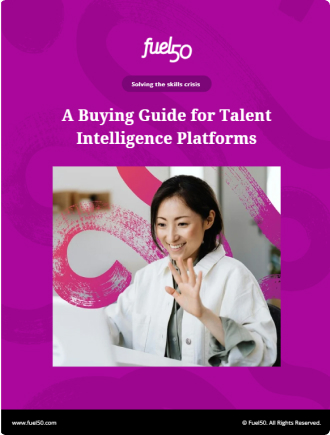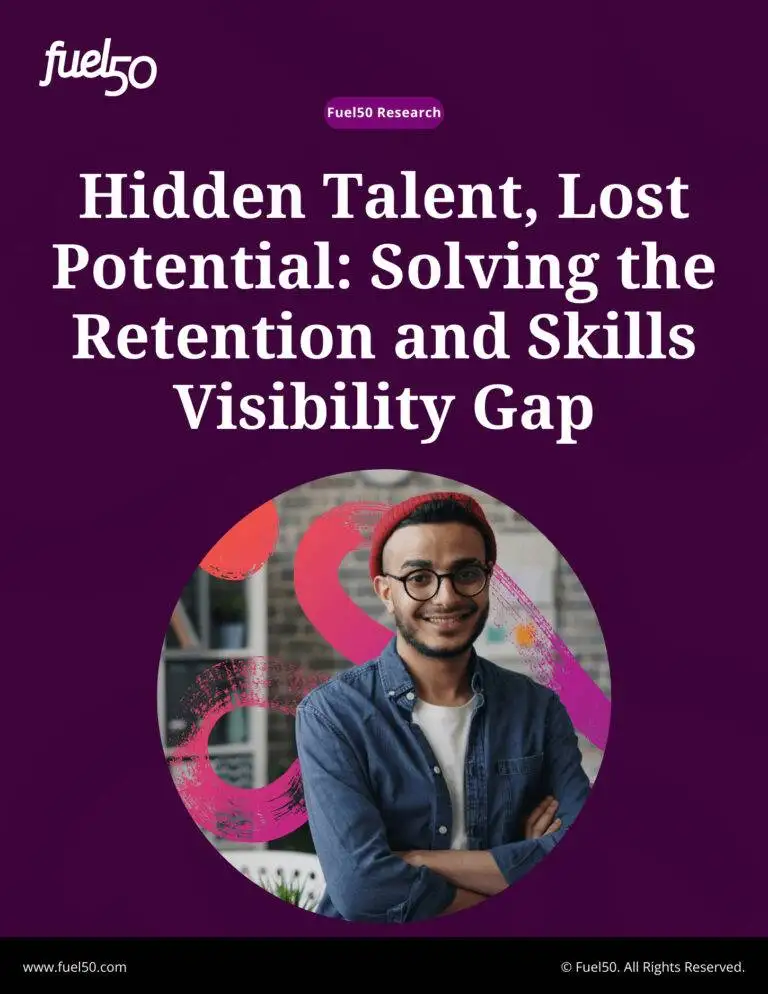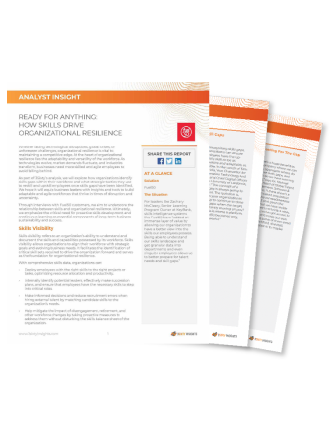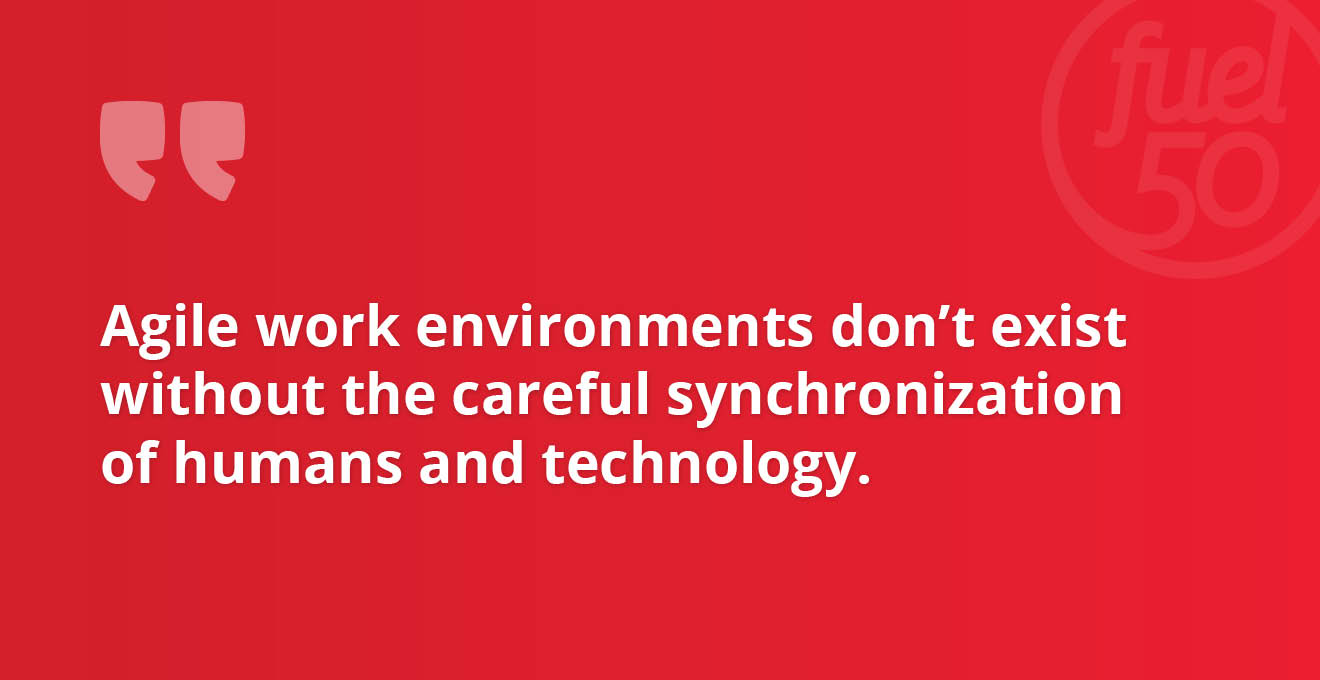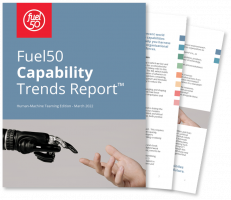Article originally published on WorldatWork, September 13, 2022.
Written by Anne Fulton.
We have hit a moment when not only have we managed to navigate a pandemic and rebuild a workforce remotely, but we also face an economic correction of a magnitude not seen in two decades.
This is on top of ongoing talent shortages and the Fourth Industrial Revolution that continues to unfold in front of us. The new strategic imperative for HR practitioners to face is building an optimized workforce.
Over the last two and half years, technology has played an integral role in supporting organizations and their workforce through volatility and unpredictability. The imperative to consider the impact of technology on our people continues to be something all talent practitioners need to explore and invest in to create a resilient, sustainable workforce for the future.
Recognizing this, Fuel50’s dedicated workforce architecture team releases a quarterly research update for organizations on how to evolve their people strategy and capability requirements. Fuel50 Capability Trends reports leverage the Fuel50 Talent Ontology™, a complete capability library that continuously updates using the latest digital market data.
Given the recent shift from the Great Resignation to a possible impending recession, the report’s findings underscore the significance of maximizing investments in people and technologies to support them. This concept is called human-machine teaming, and organizations must learn to balance the two and find ways to empower their people, with technology as the enabler.
Brookings defines human-machine teaming as,
a relationship — one made up of at least three equally important elements: the human, the machine and the interactions and interdependencies between them.
Understanding how to optimize the relationship between humans and technology allows organizations to move away from using basic technology to get work done and adopt a more collaborative, agile approach to teaming with technology. This includes exploring the positive and negative impacts of technology on work and determining the skills and capabilities employees need.
The positives are easy to find: speed and productivity are up, time savings mean cost savings, online communication tools allow employees to work from anywhere and AI technologies improve the quality of processes and reduce human error.
The negatives have more to do with usage, over-dependence, the threat of cyberattacks and concern jobs will be eliminated by automation. Working through these, it becomes clear that there are gaps in the relationship between humans and machines and that organizations need to amplify the right capabilities to minimize or embrace global events.
The research focuses on three categories: individual enablers, leadership capabilities and organizational strategic imperatives.
- Individual enablers are skills and capabilities that assist employees in areas where technologies are less likely to excel or promote successful collaboration between humans and machines. At this level, there are 10 skills in question, ranging from critical thinking and trust in technology to empathy and self-awareness. These will allow employees to specialize in areas where machines and technology are less likely to excel. Each represents an opportunity for the organization to develop employees and ensure that the workforce can successfully work with and alongside machines.
- Leadership capabilities help leaders focus on navigating the future of work as it pertains to human-machine teaming. Nine out of 10 of these capabilities differ from the individual ones, with entrepreneurship being the only overlap. Leaders need long-term perspectives and the ability to think more holistically and encourage relationships between their teams and technologies.
- Organizational strategic imperatives can help organizations benefit from human-machine teaming. These seven imperatives center around building agility across the organization to remain successful no matter the climate and range from ethical data usage to strategic reinvention.
Knowing the value of human-machine teaming and the types of capabilities it involves, how can organizations ensure that they have what’s required? If the end goal is to align talent strategy with current driving global forces, thoughtful reflection is a good start.
HR and talent professionals should look at the current structure they have in place and assess their existing skills framework against the three categories discussed: individual, leadership and organizational. Moreover, in recognizing that the human element tends to evolve faster than that of machines, it is also helpful to use talent intelligence platforms, informed by a talent marketplace that delivers skills intelligence to support employees on their individual journeys.
Consider how organizational imperatives line up with market trends, using market data and best-in-class skills architectures. Repeat this exercise on a regular basis in order to weave it into broader development initiatives.
As Michele Parmelee, Deloitte’s global chief people and purpose officer, said,
Companies are starting to understand that if they want to succeed in Industry 4.0, they must create agile work environments and modernized workplace cultures where employees can continuously acquire new skills to keep up with the changing nature of work.
Agile work environments don’t exist without the careful synchronization of humans and technology. As organizations begin to accept this as part of the rapidly changing world of work, the better prepared they will become for whatever happens next.
ABOUT WORLDATWORK
WorldatWork serves and rewards HR professionals working throughout the world, in organizations of all sizes, and in every industry.
For more information, please visit worldatwork.org
ABOUT FUEL50
Fuel50 is the AI Talent Marketplace solution that smart-matches your people to coaches, learning, vacancies, gigs, projects, and career journeys. Harness next-gen workforce data, power internal talent mobility, drive workforce agility, and future-proof your organization.
For more information, please visit www.fuel50.com.

